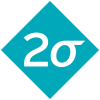Learn by doing: Using data-driven stories and visualizations in the (high school and college) classroom
Location: Beekman/Sutton North Level: Non-technical
Who is this presentation for?
- Educators, writers, data scientists, students, and researchers
What you'll learn
- Understand how Jupyter notebooks and JupyterLab improve the learning experience for students
- Learn how to apply widgets and visualizations to increase interactivity and learning engagement
- Explore JupyterHub and Binder, which offer a flexible, interactive teaching environment without the need for students to install anything on their computers
Description
Interactive content that combines a computational narrative, code, video, audio, and interactive widgets brings high school and college learning to life and puts students in charge of manipulating content and extending their learning. By giving students in the sciences and humanities alike engaging, cohesive content in familiar subjects using Jupyter notebooks, JupyterLab, and the rich Python, R, and Julia ecosystem, teachers can encourage students to develop data science literacy and use their increasing computational skill to build upon their interests.
Using examples from computational narratives, data-driven storytelling, citizen science, and animation, Carol Willing, Jessica Forde, and Erik Sundell demonstrate the value of interactive content and outline ways educators can help students develop data science literacy and use computational skills to build upon their interests. One difficulty for teachers is classroom access to modern computers and the ability to install software on those systems. Carol, Jessica, and Erik explain how teachers can deploy JupyterHub for a class using the “Zero to JupyterHub” guide, Kubernetes, and cloud services. Even if students only have access to smartphones, tablets, or shared computers, teachers can offer engaging content using Binder, which delivers a cloud-based notebook environment at the click of a button.

Carol Willing
Cal Poly San Luis Obispo
Carol Willing is a research software engineer at Cal Poly San Luis Obispo working full-time on Project Jupyter, a Python Software Foundation fellow and former director, a Jupyter Steering Council member, a geek in residence at FabLab San Diego, where she teaches wearable electronics and software development, and an independent developer of open hardware and software. She co-organizes PyLadies San Diego and San Diego Python, contributes to open source community projects, including OpenHatch, CPython, Jupyter, and AnitaB.org’s open source projects, and is an active member of the MIT Enterprise Forum in San Diego. She enjoys sharing her passion for electronics, software, problem solving, and the arts. Previously, Carol worked in software engineering management, product and project management, sales, and the nonprofit sector. She holds an MS in management with an emphasis on applied economics and high-tech marketing from MIT and a BSE in electrical engineering from Duke University.

Jessica Forde
Jupyter
Jessica Forde is a technical writer for Project Jupyter. Her previous open source projects include datamicroscopes, a Bayesian nonparametrics library in Python, and density, a tool for Columbia University study spaces based on wireless device data.

Erik Sundell
IT-Gymnasiet Uppsala
Erik Sundell is a math and physics teacher in Uppsala, Sweden. While working toward a machine learning degree online, he realized the potential of Jupyter for educators and established a JupyterHub deployment using the “Zero to JupyterHub on Kubernetes” guide for his students. Soon after, he began contributing to the open source project.
Sponsorship Opportunities
For exhibition and sponsorship opportunities, email jupytersponsorships@oreilly.com
Partner Opportunities
For information on trade opportunities with JupyterCon, email partners@oreilly.com
Contact Us
View a complete list of JupyterCon contacts
©2018, O'Reilly Media, Inc. • (800) 889-8969 or (707) 827-7019 • Monday-Friday 7:30am-5pm PT • All trademarks and registered trademarks appearing on oreilly.com are the property of their respective owners. • confreg@oreilly.com









